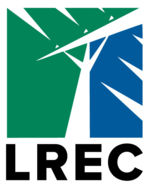Electric cooperatives power 56% of the nation’s landmass—from booming suburbs to remote rural farming communities. Unlike investor-owned and municipal utilities, the purpose of a cooperative—above all else—is to provide reliable, affordable electric service to its membership. In recognition of National Co-op Month in October, let’s take a look at the ways the cooperative model differs from other utilities.
You’re a member, not a customer.
Cooperatives are unique because they are owned by you, the member. This means you have a voice in the way we run the co-op. Members elect the co-op’s board of directors and can run for a seat on the board if they wish to do so. Your vote and participation help shape the direction of the cooperative.
We focus on service, not profits.
Unlike investor-owned utilities, which are operated to make the most profits for stakeholders, electric co-ops do not earn profits. Instead, any margins remaining (after all expenses have been paid) are returned to members in the form of capital credits.
We’re local and community-focused.
Because we are owned by the members we serve, electric cooperatives have a strong commitment to our local communities. In addition to providing safe, reliable, and affordable power, electric co-ops are involved in many local community development programs.
We’re committed to innovation.
We answer to local members rather than far-away shareholders, and are able to respond quickly to changing member needs. We are committed to experimenting and innovating in ways that benefit the local communities and members we serve.
 Lake Region Electric Cooperative
Lake Region Electric Cooperative